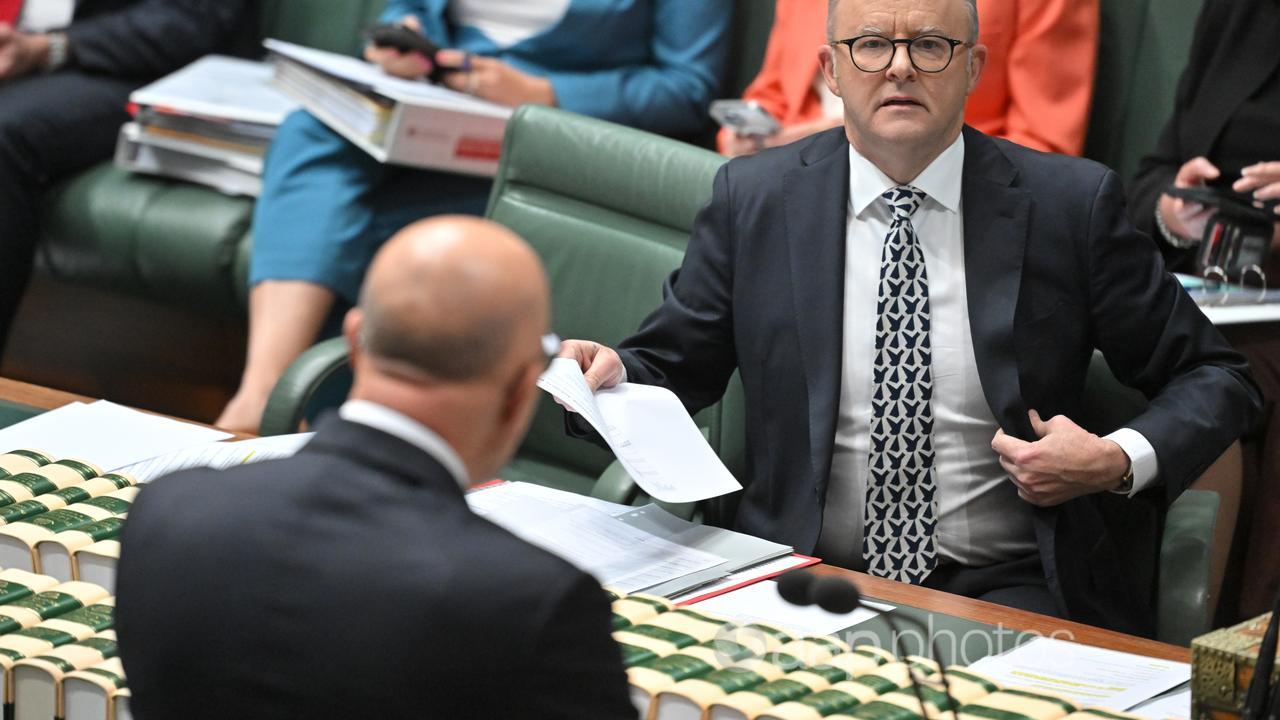AAP FACTCHECK – A coalition frontbencher claims Australia’s Labor government is avoiding scrutiny in Question Time by routinely taking two fewer opposition questions than its predecessor.
This is misleading. The opposition is allocated fewer questions, but the crossbench has more after gaining additional lower house seats in the 2022 election.
The overall number of questions per Question Time – 20.2 for the current parliament compared with 20.7 for the previous – has not substantially fallen since the change in government.
Manager of Opposition Business Paul Fletcher has made the claim multiple times since the May 2022 election, including in a media release on June 7, 2024.
“The Albanese Labor Government answers far fewer opposition questions than the former Coalition Government did,” he said.
The release also stated the current Labor government answered an average of around two fewer questions between May 14 and June 6 2024, compared to the former coalition government between May 24 and June 24 2021.

Mr Fletcher also made a similar claim in a post on X, formerly Twitter, on August 21, 2024.
“(Albanese) shut down question time today after 6 opposition questions; yesterday after 7,” he wrote.
“The Morrison Govt routinely took 9 or 10 opposition questions but (Albanese) hates scrutiny.”
When asked by AAP FactCheck for evidence to support his claim, Mr Fletcher’s office said it was based on data from the House of Representatives Procedure Office, which keeps statistics on parliament.
Mr Fletcher’s spokesperson said Labor had answered an average of 7.4 opposition questions per sitting day in the first half of 2024 up to June 27.
That compared to the former coalition government answering an average of 9.7 opposition questions per sitting day between January 1 and June 24, 2021.
“Over this term the average number of opposition questions per question time Labor answers has dropped,” the spokesperson added.
Mr Fletcher is correct in that the number of opposition questions has reduced. However, this is mainly because more questions are being asked by the expanded crossbench.
While the overall number of questions asked across Question Time has marginally fallen, it’s not to the extent suggested by Mr Fletcher.
There were 20.7 questions per sitting day on average during the last parliament, compared to 20.2 questions in the current parliament up to August 23, 2024, according to the Procedure Office.
The number of questions from members of the government has risen from 9.95 to 10.12 per sitting.
Questions from the opposition have fallen from 9.68 to 7.19.
However, the number of crossbench questions has almost tripled from 1.06 to 2.9 - in line with their seats tripling from six to 18 at the last election.
The current crossbench accounts for 11.9 per cent of lower house members, and asks 14.4 per cent of questions according to the Procedure Office.
The government's new Question Time procedure, Sessional Order 65A, allows crossbench MPs to ask the fifth, 13th and 17th questions in each sitting.
The procedure was introduced to protect the rights of the crossbench to ask three questions per sitting, according to the Hansard discussion from that motion.
This sessional order only applies to the current parliament and could be amended if the composition of the crossbench changes at the next election.
The coalition's 55 MPs comprise 36.4 per cent of the 151 members, and receive 35.6 per cent of questions.
The previous Labor opposition's 68 MPs accounted for 45 per cent and received 46.8 per cent of questions.
Political experts told AAP FactCheck that Mr Fletcher's claim was misleading.
UNSW's Associate Professor Diana Perche, who co-authored a research paper looking at the standard of Question Time over 30 years, said the government wasn't doing anything significantly different from its predecessors in this area.
She said increasing crossbench questions was in line with parliamentary convention, and there was no reason to consider their questions as less legitimate scrutiny.
Assoc Prof Perche added that her research found "questions from the crossbench were more likely to be genuinely seeking information, rather than combative point-scoring, and were often taken more seriously and answered more informatively by the government".
Associate Professor Sarah Moulds, from the University of South Australia, said the increase in questions to the crossbench was a fair representation of the electorate's will.
"The Australian public has elected representatives from across a range of political parties/allegiances – each one of these elected representatives should be able to exert their important scrutiny functions," she told AAP FactCheck.
"The standing orders reflect an effort to ensure some kind of proportionate representation when it comes to the 'allocation of the call' for questions during question time."
Assoc Prof Moulds also said Question Time was not the only form of scrutiny applied to the government, and that estimates and other committee processes should be taken into account.
The Verdict
Misleading – The claim is accurate in parts but information has also been presented incorrectly, out of context or omitted.
AAP FactCheck is an accredited member of the International Fact-Checking Network. To keep up with our latest fact checks, follow us on Facebook, Twitter and Instagram.
All information, text and images included on the AAP Websites is for personal use only and may not be re-written, copied, re-sold or re-distributed, framed, linked, shared onto social media or otherwise used whether for compensation of any kind or not, unless you have the prior written permission of AAP. For more information, please refer to our standard terms and conditions.


















